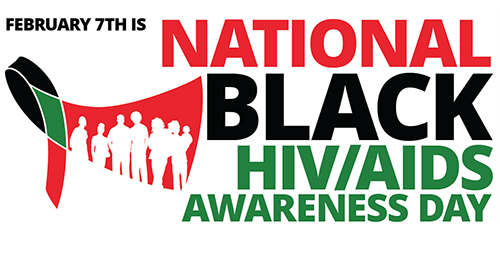Five Facts on National Black HIV/AIDS Awareness Day
January 24, 2022

Monday, February 7, is National Black HIV/AIDS Awareness Day. Each year, we observe this important community awareness day to remind the general public that racial disparities continue to have devastating impacts on Black communities and hinder the U.S. HIV response.
Here are five facts about the impact of the HIV epidemic on Black Americans today:
- Black Americans accounted for 42% of new HIV diagnoses in 2019, despite representing only 13% of the U.S. population. Black Americans are at higher risk of HIV exposure, not because they engage in more risk-associated behaviors, but because the prevalence of HIV is so much greater among Black communities than among any other racial/ethnic group. While prevention efforts have helped reduce the annual number of new HIV diagnoses among African Americans over the last decade, progress has not been uniform across the Black community.
- Black gay and bisexual men account for approximately 1 in 4 new HIV diagnoses in the U.S. Black gay and bisexual men continue to be at highest risk for HIV among African Americans and all other groups nationwide, particularly those aged 13 to 34 who account for 3 in 4 diagnoses among Black Americans. Black gay and bisexual men face many challenges placing them at higher risk for HIV, including delays in access to care, lower percentages of viral suppression, and socioeconomic factors such as higher poverty rates and stigma.
- About 1 in 7 Black Americans living with HIV do not know they are infected. National Black HIV/AIDS Awareness Day is an HIV testing and treatment community mobilization initiative for African Americans. A late diagnosis of HIV infection is common in African-American communities and results in missed opportunities to get early medical care and prevent transmission to others.
- Black transgender women are more likely to be diagnosed with HIV than transgender women of other races/ethnicities. Black trans women account for nearly one half of new HIV diagnoses among trans women; Latinx trans women account for about 1 in 3, and white trans women less than 1 in 10.
- Rates of HIV among Black women in the U.S. have declined. The number of new HIV diagnoses among Black women fell 10% from 2014 to 2018. Despite these gains, new HIV diagnoses among Black women are still high compared to women of other races/ethnicities. More than half of new HIV diagnoses for women continue to be among Black women.
For more information about HIV/AIDS and African Americans, visit https://www.cdc.gov/hiv/group/racialethnic/africanamericans/index.html